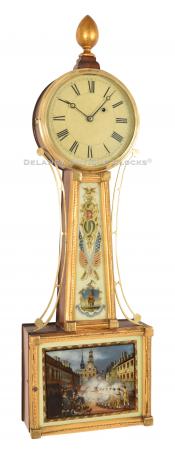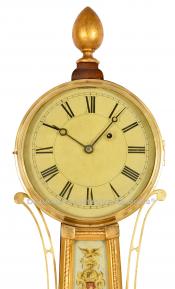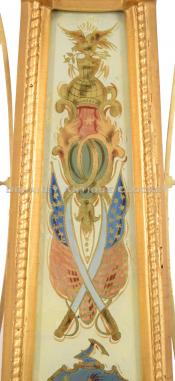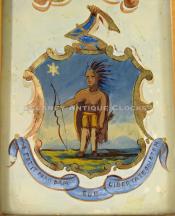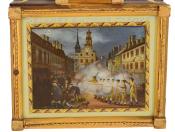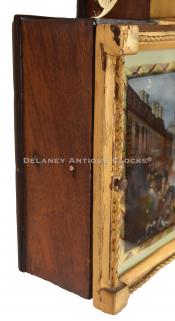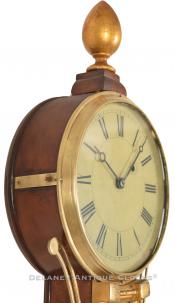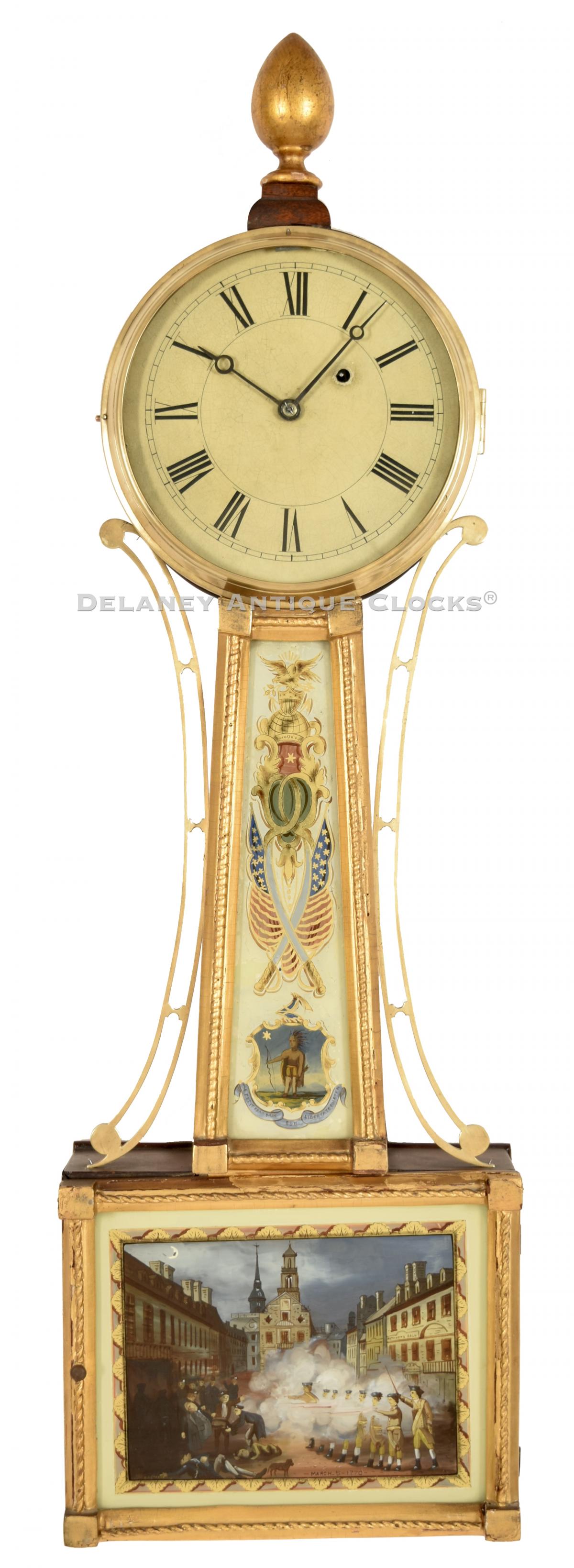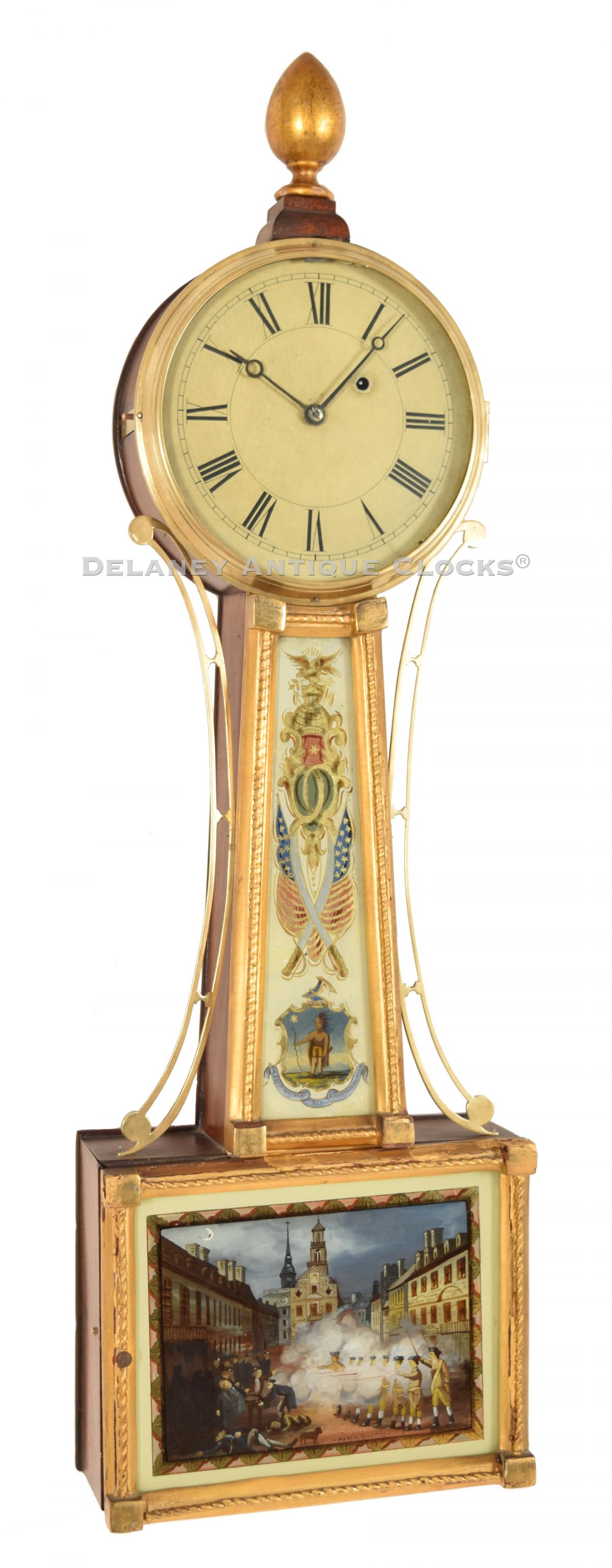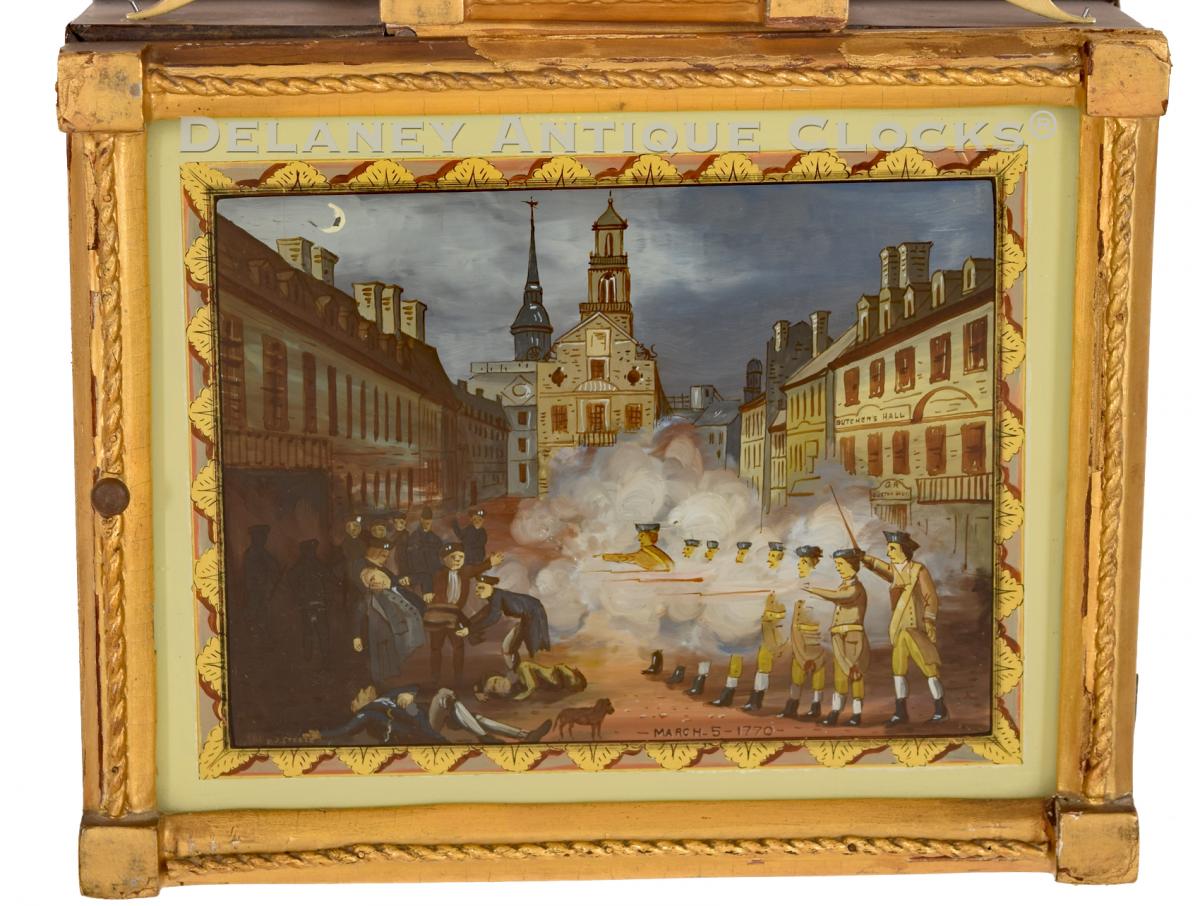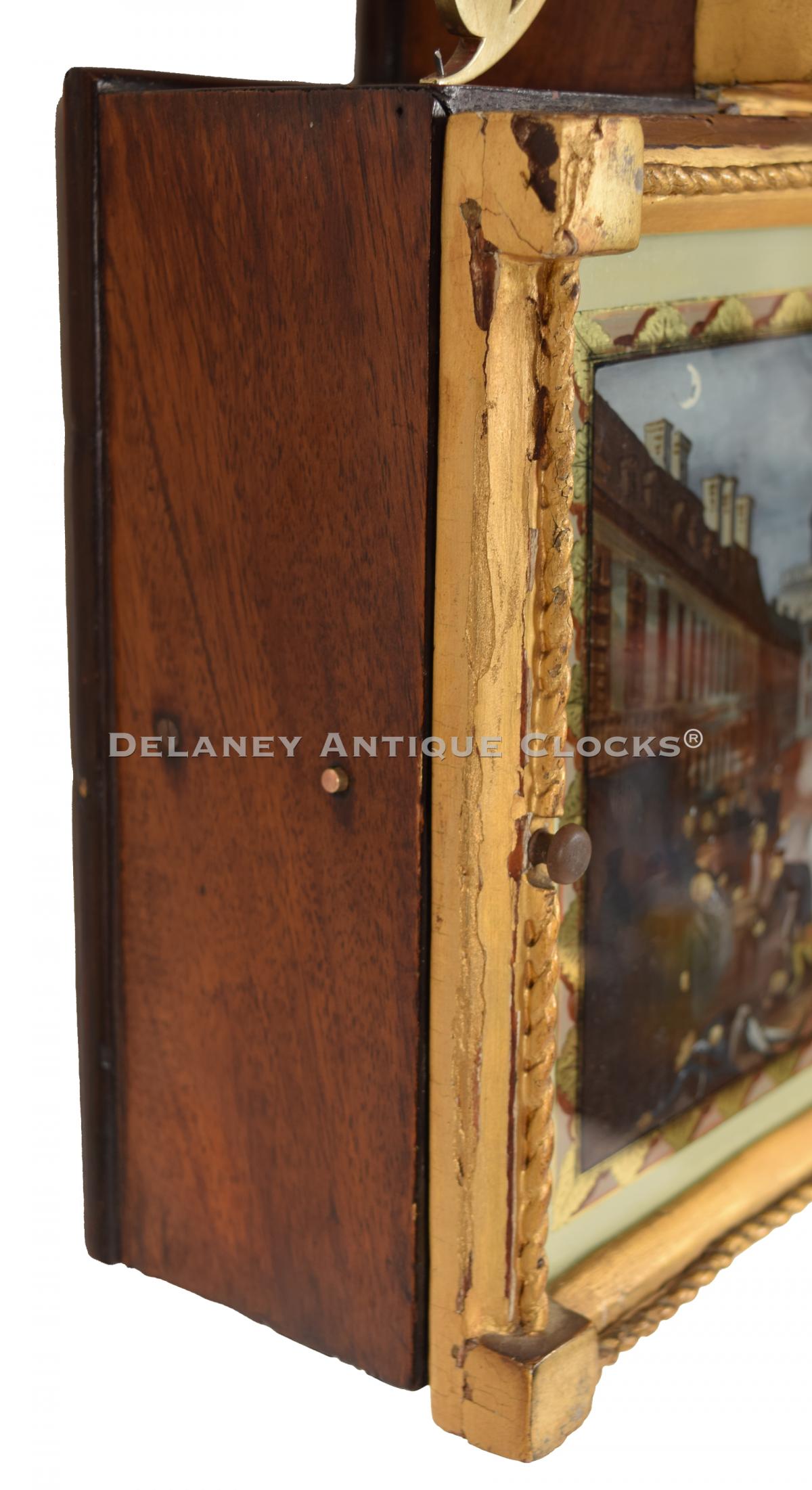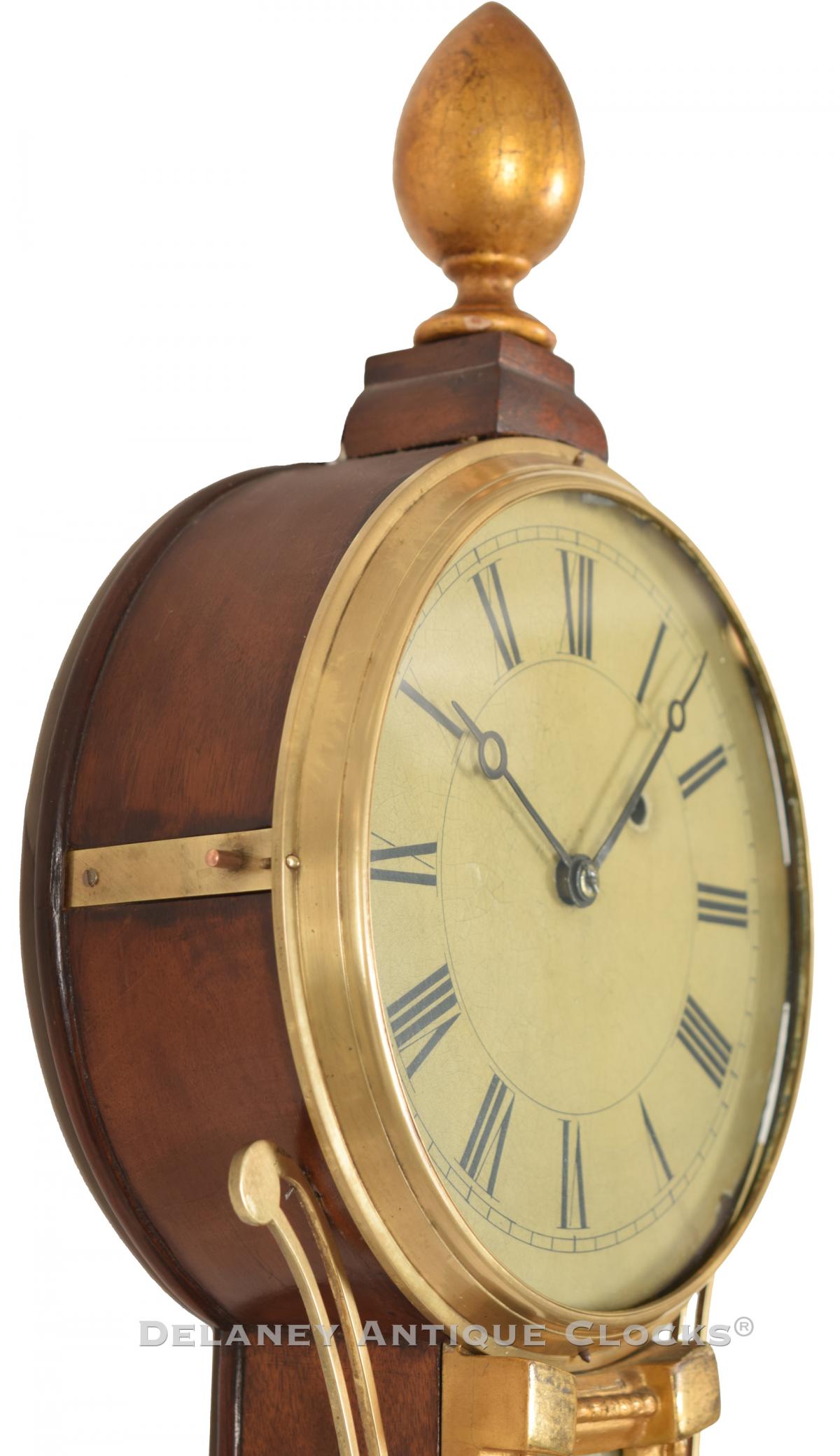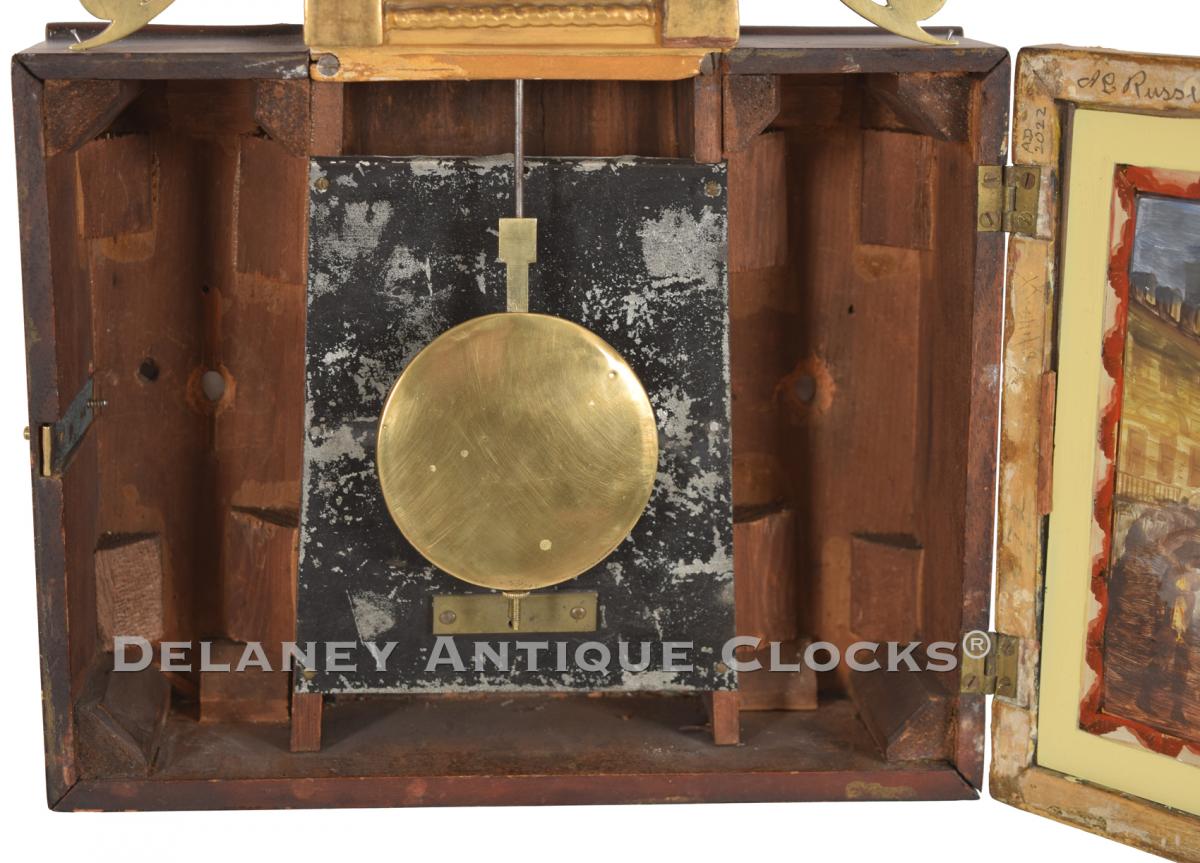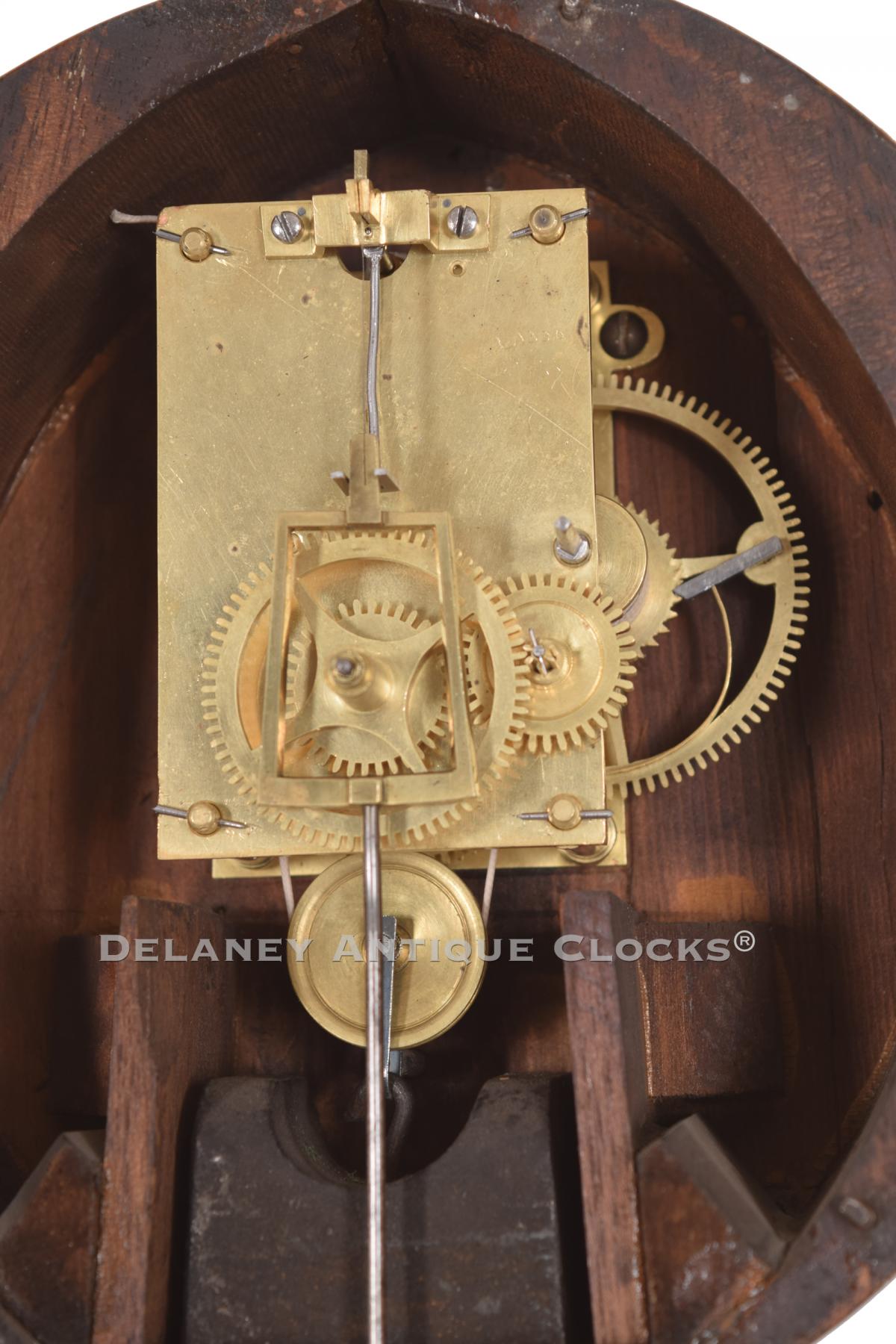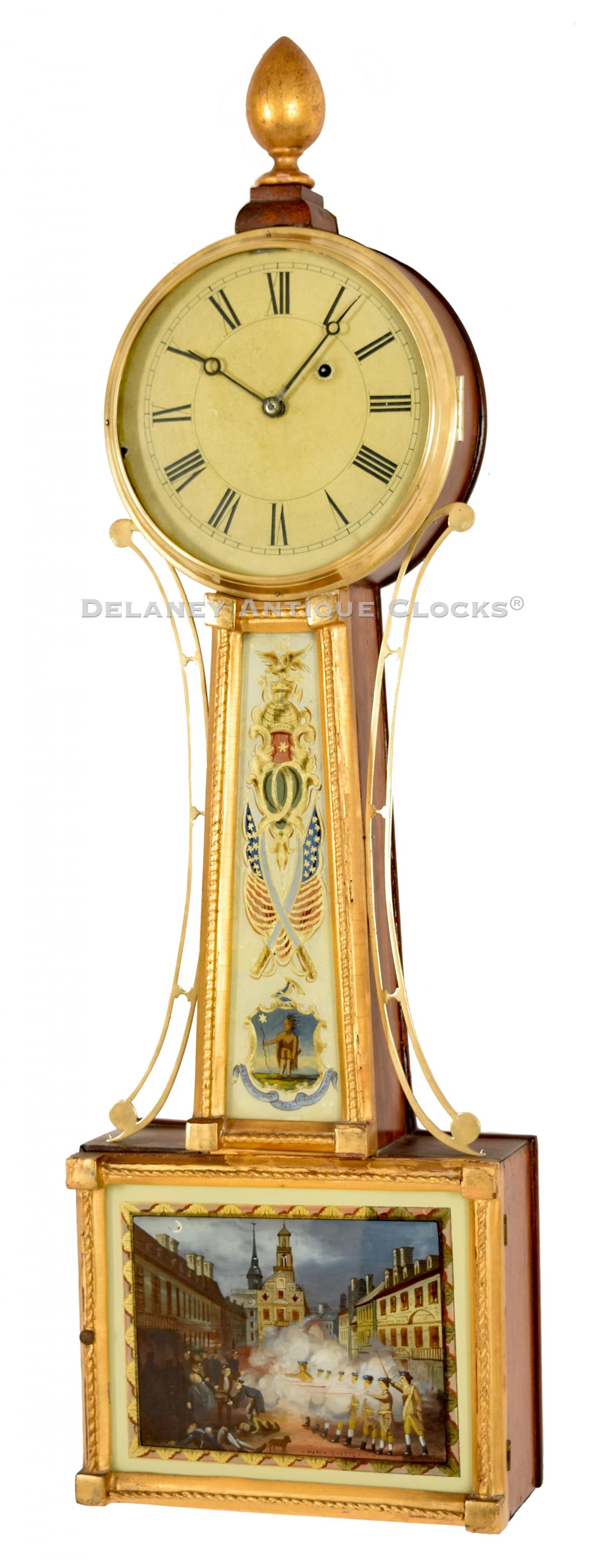A patriotic-themed unsigned New Hampshire-made timepiece or banjo clock attributed to L. W. Noyes of Nashua, New Hampshire. It features a painted scene of the Boston Massacre. 222114.
This patriotic example is not signed. The L. W. Noyes attribution is based on the unusual sidearm construction and the ear-mounted movement.
This is a fine Federal Massachusetts timepiece or “Banjo clock” made in New England circa 1815 - 1820. The case is constructed in mahogany and features gilded mahogany frames and a carved and gilded acorn finial. The case sides retain their shellac-based finish. The gold case accents complement this warm, natural coloring. The bezel and the variant-style side arms are cast in brass. These components have not been polished in several decades and have developed a wonderful mellow patina. These sidearms have an hourglass shape as a divider instead of the typical diamonds. These are frequently found on clocks of New Hampshire origin. The cast brass bezel is fitted with a flat piece of clear glass. This bezel is hinged, and the glass protects the dial.
Both frames retain much of their original gilded. The gilding is old and has suffered some losses. These areas have been stabilized, lightly painted over, and restored with gold paint or wash. The coloring is consistent on both frames. The frames are also decorated with applied rope moldings. Colorfully hand-painted tablets are secured in the frames. These tablets depict patriotic themes and are original to this clock. Over the years, they have experienced some losses and restorations to the designs. The lower tablet depicts the “Boston Massacre” and is dated March 5, 1770.
The Boston Massacre occurred on March 5, 1770, when British soldiers shot and killed five Colonists in the heart of Boston. It was also known as the Incident on King Street. This event was one of several pivotal moments that led up to the American Revolution, as it heightened tensions between the Colonists and the British government. The events leading up to the massacre began when the Colonists became unhappy with the presence of the British soldiers. On the evening of March 5, tensions boiled over when a group of colonists began taunting a group of soldiers and threw snowballs at the soldiers. Feeling threatened, the British soldiers fired into the crowd, killing five people. The aftermath of the Boston Massacre was a turning point in American history. The event helped galvanize the Colonists against the British and played a role in the eventual outbreak of the American Revolution.
In 1770, Paul Revere produced a Hand-Colored Engraving of The Bloody “Boston Massacre.” This is largely considered the most famous and historic engraved print in American History. The scene depicted in this clock is based on this engraving. It is illustrated in virtually every American History reference book.
The throat glass is also decorated with several patriotic themes. At the top is an American eagle depicted with its wings outstretched over the globe. The eagle has affixed to its chest an American Shield. With its powerful talons, the eagle is also clutching a group of arrows representing war in one claw and a holly branch representing peace in the other. This stylized symbol represents The Latin motto “E Pluribus Unum.” This was suggested by Pierre Du Simitière, the consultant and artist on the First Great Seal Committee (1776). It means “Out of Many, One.” Below this are two American flags and two sabers. At the bottom is the State Seal of Massachusetts. The seal is designed with an Indian holding a bow and arrow. The arrow pointed down in a gesture of peace. The banner reads, “ENSE PETIT PLACIDAM SUB LIBERTATE QUIETEM.” This translates to mean, “With a sword, she seeks quiet peace under liberty.” Although the looser English translation more commonly used is, “By the sword, we seek peace, but peace only under liberty.” Above the shield is the state military crest. This is represented by a bent arm holding a broadsword. The sword has its blade up to remind us that it was through the American Revolution that independence was won.
The brass dial bezel opens to access the painted iron dial and hands. Roman-style numerals demark each hour on a segmented minute circle. The hands are steel and feature open moons out on their ends.
The weight-driven movement is of good quality. It is diagonally mounted to the back of the case with ear mounts incorporated into the back plate’s design. Noyes is known to have used this mounting system. The pendulum hangs from a bridge on the front plate. The rod is steel, and it supports a brass-covered bob.
This fine clock measures 33 inches long overall.
Inventory number 222114.
Leonard W. Noyes was born in Canaan, NH, on January 14, 1779. He moved to Boston, presumably to learn clockmaking. In 1823 he relocated to Nashua and was employed as an agent for the Nashua Manufacturing Company. In 1832 Leonard established a clock factory and employed other notable Clockmakers such as Belding Bingham, Joseph Wyman, and William Cox, to name a few. He became a prominent businessman in Nashua and served on the New Hampshire State Legislature. He was also a financial backer of the Nashua Watch Company. Noyes died in Nashua on March 18, 1867.


